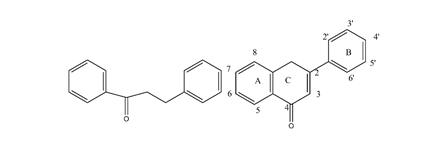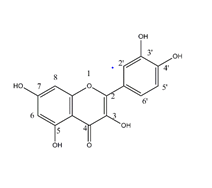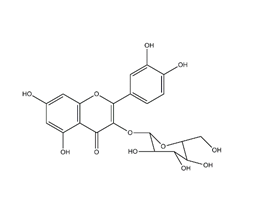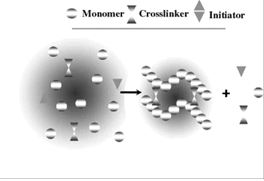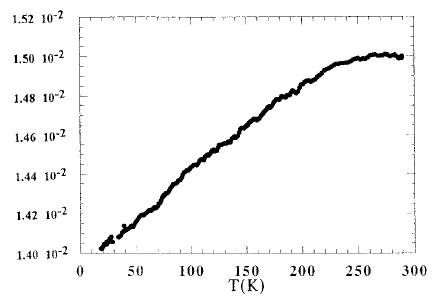Keywords: Patient; Doctor; social media; survey; relationship; Iraq
Introduction
This study is to examine how patients s' communicate with doctors through social media. We found that as the patient was more likely to engage in various types of online health activities, Jiran Hou & Minsun Shim (2010), such as using social media sites for medical questions, searching for answers, and seeking health information.
This study's results emphasized the critical role of Doctor-patient communication in motivating Patients s to turn to Social Media Networks in Iraq for health purposes. Social media networks are no longer limited to their traditional roles. They have become virtual platforms for exchanging medical information and have contributed to transferring the medical profession from behind closed doors to the online electronic environment (DANIEL ROVNIAK, and KRASCHNEWSKI 2013). From there, Doctors can play significant roles in properly spreading health awareness. However, many others misuse these platforms by distributing misleading information and promoting improper guidance (DANIEL ROVNIAK, and KRASCHNEWSKI 2013).
This study categorized Doctors who use social media networks into two types. The first uses social media to serve the community, while the second views social media as a means of marketing while discussing promotions and advertisements. In the medical context, the main disadvantage presented by social media networks is that they are not usually run by Doctors but are instead operated by people outside the profession and have no connection to the medical field whatsoever. This research examined the methods used by Doctor s in Iraq when communicating with their patients via social media and how the doctors and patients in Iraq are affected by and affect social media sources. Herein lies an important question. What is social media's role in the medical field, which represents a significant necessity for all people? This is especially true since many influential Doctors are now active on social media, whether they do this to connect with patients, provide advice, or promote offers. Therefore, this study organized a representative sample consisting Of 222 Iraqi Doctor s in Baghdad. Phone Interviews were then set up, during which the Doctor s completed questionnaires were designed to understand the roles and effects of the social media sources they used to connect with their patients.
Literature review
The purpose of this survey research is to investigate the communication strategy via social networks between patients, and doctors in Iraq, and what are their motives for the use and gratifications. The advantage of using social media is the dynamic capability they provide to disseminate health information, but the use of media has advantages and disadvantages, such as the unreliability of information and inefficiency. We examine basic questions concerning why the Patient-Doctor chooses social media to build their relationship and their motives for choices. The predominant finding mentioned in previous research articles is that people engage in social networking sites such as Facebook, Twitter, or Instagram to satisfy particular social needs. There is a consensus among scholars that social media enables users to embark upon weak relationships and reaffirm pre-existing, healthy relationships. Jiang & Liu performed an online survey to examine The Relationship between Internet health information seeking (IHIS) and patient-centered communication (PCC) in China.
The driving force behind this study, an uptick in violence orchestrated against Chinese healthcare practitioners, assumed that negative publicity regarding China's healthcare system causes friction between doctors and caregivers. In response to increased violence against healthcare practitioners, medical professionals have encouraged patients to engage in medical communication, PCC, and IHIS, behaviors which lead to greater responsiveness and transparency. The researchers hypothesized that one-way IHIS is positively associated with patient-centered care. The researchers created a convenience sample through an online survey company and recruited 483 people to complete the survey in exchange for 10 Chinese yuan. The researchers operationalized IHIS as the frequency of using the Internet to search for health information unidirectionally, without communicating with others online. The study found that one-way IHIS was not associated with patient-centered care because people are overwhelmed by the amount of health-related information found on the Internet.
Zheng conducted interviews with 32 young adults in 2012 to understand why young people seek health-related information on Facebook. The study assumed that social networking facilitates transparent interactions between social media users and public health practitioners in the digital age. The researcher posed three separate questions to identify the relationship between young adults and to use social media for health information purposes. First, how and why do young adults seek and scan for online health information? Second, how and why do young adults usually use Facebook? Third, how Moreover, why do young adults seek and scan for health information on Facebook? Zheng recruited 32 Facebook users between the ages of 18 and 30 and used a maximum variation sampling strategy to place information in code categories. The study found that young people often used open-source health information to make self-diagnoses. Next, respondents generally did not pay careful attention to all news feeds and pay selective attention to a few posts or photos. Finally, this study found that health information acquired from Facebook was limited and casual. Ben-Yakov, Kayssi, Bernardo, Hicks, & Devon surveyed a pool of healthcare professionals to determine how frequently they use Facebook and Google to search for their patients. The primary assumption is that looking up a patient potentially breaches the ethical obligations of healthcare practitioners. The researchers distributed the survey to 683 staff Doctor s, 116 residents, and 54 medical students using the Canadian Association of Emergency Doctor s and 226 fourth-year medical students at the University of Toronto. The survey found that of 530 individuals who responded, about 12% used Google to search for patients, and roughly 2% performed Facebook searches on their patients. Moreover, 29% of respondents confirmed that looking up a patient on a search engine or social media is “very unethical”; 21% labeled the practice as “unethical,”; and only 9% believed that the behavior was “ethical.
Method
Some relationships will look at communication from the perspective of information a receiver needs to communicate. In contrast, others will give importance to the fact that the sender initiates the process and, thus, needs communication the most. Some scholars in defining the term human communications have used this view. Relationships vary depending on the situation and place where the need to communicate does arise. However, all these models will narrow down to a simple communication model with the sender conveying information to the receiver, as seen in the figure below of a Simple relationship (Foulger, 2004). A definition of communication "who says what, where, when, to who, through what channel or medium, and with what purpose or intention" (Lasswell, Lerner, & Pool, 1952, p. 12).
Consequently, the questionnaires designed according to the definition of communication definition; medical contact through social networking has become one of the most critical issues to consider when attempting to understand how doctors use these sources and how patients receive their messages. Social network messages are considered major social propellers in the digital age. They are also considered the most potent influences on the formation of societal opinions and decision-making processes. For those reasons, scholarly research has begun to emphasize the importance of social network usage among Doctor s in general. However, this study focused on those working in Iraq. Moreover, This study assembled a field team to conduct a face-to-face survey designed to investigate social media usage among 222 doctors in Iraq. The instrument is designed to understand the relationship between patients and doctors and patients through the social media window and know which social media medium is most used.
Doctor responses were then analyzed using descriptive statistics. More specifically, we used a systematic random sample of Doctor s in Baghdad's four medical areas, representing a quarter of all residents of Iraq. As such, four of the area's most critical medical locations are designated to select appropriate clinics.
Data Collection
We conducted 222 total successful phone interviews. The sample included a unique variety of snow ball sample seeds of Iraqi Doctors (79% men and 21% women). Specialties were as follows: 8% dentists, 10% internists, 20% general surgeons, 12% urologists, 4% cancer Doctor s, 9% OBGYNs, 4% family specialists, 9% pediatricians, 5% dermatologists, 2% ophthalmologists, 3% rheumatologists, and smaller percentages of anesthesiologists, radiologists, and orthopedists. We then categorized the sample according to years of experience in the medical field, as follows:
17% with up to 15 years of experience
16% with up to 20 years of experience
37% with 5 to 15 years of experience
the remainder with 3 to 4 years of experience
Age categories were as follows: 49% between 36 and 45 years of age, 17% between 31 and 35, and 5% between 25 to 30. we used a snowball sampling of doctors in Baghdad. As such, the seeds of the sample is started in four of the area’s most critical medical locations were designated so that appropriate clinic could be selected. We chose doctors as seeds of our snowball sample from each clinic, resulting randomly in around 20 - 25 interviews at each of the ten final participating facilities. However, some interviews were canceled due to refusals or because the doctors were unavailable. Canceled phone interviews were thus replaced with other interviews so that a total of 20 - 25 interviews were ultimately conducted at each medical center (i.e., 222 total successful interviews). The interview period lasted approximately a month; the field study began on February 15, 2020, and ended on Murch 18, 2020.
Research Questions
A questionnaire developed based on Doctor and patient needs through social media networks (Longnecker, 2016) included the following main areas of inquiry: identifying how Doctor s in Iraq use social media, the rate at which they are exposed to social media (how many hours they spend using it), how many times each day use social media platforms, how many websites they visit, and the objectives behind such usage. The questionnaire also covered issues affecting individuals who use social media networks for medical or other purposes, the most beneficial social media roles within the medical field, and the risks presented to patients who use it. Other issues included the advantages/disadvantages of social media networks and the motives behind patients who resort to these platforms when seeking medical advice. Data collected during a field survey, including face-to-face interviews with doctors, where data collected during the phone field survey. Each interview lasted no longer than 8 - 12 minutes. In this regard, some doctors s required predetermined times, while others were conducted upon receiving approval from the Doctor. So the research questions summarized in:
How much time is spent by doctors on social media for medical purposes?
What are the specializations of doctors who use social media for medical purposes?
What social media sites do doctors use for medical purposes?
What are the motivations of doctors and patients for using social media for medical purposes?
What are the risks of using social media for medical purposes?
What are the disadvantages of using social media for medical purposes?
Fieldwork Obstacles
While conducting this study, the biggest obstacle was persuading physicians to participate; there was difficulty setting appointments to call with physicians due to their busy schedules. Second, some physicians rescheduled their appointments many times, resulting in extended time spent by the researcher rearranging appointments. Third, many physicians inquired about the entity behind this research and asked whether personal information would be required. Thus, the researcher confirmed that all research was solely conducted and circulated by him and that no personal information would be required. Fourth, many physicians refused to participate without specifying the reasons.
Results
Regarding the number of minutes spent by doctors on social media for medical purposes, results showed that 9 % did not use social media for medical purpose and 11 % of doctors used social media for about 0 – 15 minutes daily, while 16 % did so between 15 – 30 minutes per day, 38 % did so between 30 -60 minutes per day, and only 26 % did so between 60 -120 minutes per day. Furthermore, 12 % spent 120 minutes and more (Figure 1).
Figure 1: Daily time spent on social media by doctors for a medical purposes.
Figure 2 shows the percentages of each specialist type that used social media. As shown, there were dentistry specialists (82%),internists (77%), general surgeons (81%), urologists (72%), cancer Doctor s (22%), obstetricians and gynecologists (87%), family specialists (87%), pediatricians (84%), dermatologists (87%), rheumatologists (22%), anesthesiologists (3%), radiologists (15%), and orthopedists (63%). Moreover, doctors confirmed that more than 80% of their Patients via social media are under age forty years old, and the number is very few after the age of 45. Moreover, women represent more than 75% - 80% of their Patients via social media. (Figure 1) Social Media Usage Among Doctor.
Figure 2: Social media usage among Doctors in Iraq
According to the survey, the number of social media sites visited showed that participants used a variety of social media networks. Specifically, the highest percentage used Facebook (93%), followed by YouTube (73%), WhatsApp (57%), Instagram (43%), Twitter (39%), Viber (20%), Snapchat (14%), LinkedIn (13%), and Telegram (6%). Further, results showed that participants used social media sources for a variety of purposes. Only 5% did so solely for medical purposes, while 12% did so solely for personal purposes, and 83% did so for both purposes.
Figure 3 shows a specific breakdown of social media motive of usage among doctors. As seen, 30 % marketing’s, 22% collected medical information, 15% Maintain the relationship with patients, 25%Providing medical advice for the public, 8 % entertainment.
Figure 3: Motives of Using of Social Media by Doctor.
Figure 4 shows the results for respondent opinions on patients' perceived risks when using social media for medical purposes. As shown, 16% warned against those who impersonate Doctors in related groups, 26% warned against considering any advice given based on personal experiences as legitimate medical information. 14% warned against the promotion of unoriginal health products that may result in serious hazards to patient health, 5% warned against those who use social media to attack competitors, 21% warned against the spread of alarming and false warnings, and 22% warned against the immense amount of information spread by people without proper or sufficient medical knowledge.
Figure 4: Risks Presented to Patients When Using Social Media
Results also showed that 73% of participants operated their own social media accounts, while 11% had others operate their accounts for them. Finally, 16% indicated that they did both (i.e., received assistance at times).
Participants Who Built Relationship with Their Patients through Social Media networks
When asked whether they had success in establishing personal relationships with their patients, 22% of participants answered “yes,” while 78% answered “no.” Further, 77% considered social media networks useful in the medical field, while 23% did not.
Disadvantages of Using Social Media in the Medical Field
Results showed that 85% of participants perceived disadvantages of using social media networks in the medical field, while only 15% said there were no such disadvantages. Figure 4 shows the reasons that some believed there were disadvantages. Specifically, 43 % considered it a medium for spreading false information, 18% is considered fake health providers that are behind social media, 26% considered a doctor that unable to give a correct diagnosis through social media, and 13% is considered a medium for promoting and marketing products that spread rapidly.
Figure 5: Disadvantages of using social media in the medical field
Motives That Patients Resort to Social Media for Medical Advice
Results showed that patients resorted to social media for medical advice for several motives, to get a variety of constellations from several doctors in a short period and in an easier way (29%), Maintain the relationship with Doctors (33%), the patient’s desire to contact a Doctor anonymously (28%), and the availability of free consultations (10%).
Discussion
This study found that most participants used about three different networks, while Facebook was the most commonly used to communicate with their patients (93%), followed by WhatsApp (57%) and Instagram (43%). Most participants used social media networks for both personal and medical. Most participants considered social media network usage useful (77%), while others considered it harmful (23%). Through this, we can understand the patient's needs and the doctor's needs through their use of means of communication. Although the great benefit of social media is building the doctor-patient relationship, there are very significant risks during this use. Moreover, there is significant use of social media in terms of marketing, treatment, and humanitarian. Because of this relationship's importance and seriousness, there is a need for rules and ethics that the user must understand for social media use in the health field, especially in a country like Iraq. Through the results of the study, we can produce that Social Media changed the Doctor-Patient Relationship. Young people and women are the most used social media through their medical inquiries, which is due to a wishing in preserving privacy, and this Phenomenon needs more studies. Social media and other communication technologies tools can build relationships between doctors and patients and empower patients to make safer and healthier decisions.
There are disadvantages to using social media in the medical field, primarily through the exploitation of patients by those who falsify their truth and take the roles of doctors for profit.
References
- Ariela Popper-Giveon, Tamar Israeli & Yael Keshet (2019) Post-trauma: healthcare practitioners use social media during times of political tension, Critical Studies in Media Communication.
- Aljasir, Shuaa et al. "Usersâ?? Behavior On Facebook: A Literature Review, International Journal of Business Administration, VL - 8.
- Azer, SA. Social media channels in health care research and rising ethical issues. AMA Journal of Ethics 2017;19: 1061.
- Ben-Yakov, Kayssi M, Bernardo A, J., Hicks, C., & Devon, K. Do Emergency Doctor s and Medical Students Find It Unethical to â??Look upâ?? Their Patients on Facebook or Google? 2020.
- Christina M. Sabee , Carma L. Bylund , Jennifer Gueguen Weber & Ellen
- Sonet The Association of Patientsâ?? Primary Interaction Goals with Attributions for their Doctorsâ?? Responses in Conversations about Online Health Research, Journal of Applied Communication Research, 40:3, 288. 2012.
- Foulger, D. A Ecological Model of the Communication Process. Davis.foulger.2004.
- George, Daniel R, Liza S. Rovniak, and Jennifer L. Kraschnewski, "Dangers And Opportunities For Social Media In Medicine. Clinical obstetrics and gynecology Journal, 453.2013.
- Kirchherr, J., & Charles, K. Enhancing the sample diversity of snowball samples: Recommendations from a research project on anti-dam movements in Southeast Asia. PLOS ONE. 2018.
- Jiran Hou & Minsun Shim The Role of Providerâ??Patient relationship and Trust in Online Sources in Internet Use for Health-Related Activities, Journal of Health Communication, 15:sup3, 186-199. 2010. asswell, H., Lerner, D., & Pool, I. The comparative study of symbols. Stanford University Press. 2015.
- Longnecker, N. An integrated model of science communication â?? More than providing evidence. Journal Of Science Communication, 15(05).2016.
- Shaohai Jiang & Jiaying Liu Examining the relationship between Internet health information seeking and patient-centered communication in China: taking into
- account self-efficacy in medical decision-making, Chinese Journal of Communication, 2020.
- Sandoval-Almazan, R, Luna-Reyes, L.F, Luna-Reyes, D.E, Gil-Garcia, J.R, Puron-Cid, G, Picazo-Vela, Building Digital Government Strategies - Principles And Practices, Springer International Publishing.2017.
- Weston, R, Crandall, M, Ferrada, PSocial media and free open access medical (FOAM) education. Current Surgery Reports;7. Godbole P .Prasad, 2019
- Koyle A Martin,. Wilcox T .Duncan, Pediatric Urology: Surgical Complications and Management, WILEY Publishing, 26. 2015.
- YurtoÄ?lu, Nadir. History studies. International Journal of History;10;259. 2018.
- Campbell, L, Evans, Y, Pumper, M, Moreno, MA. Social media use by Doctors: a qualitative study of the new frontier of medicine. BMC Medical Informatics and Decision Making;16;91. 2016
- Yue Zheng (2014) Patterns and Motivations of Young Adultsâ?? Health Information Acquisitions on Facebook, Journal of Consumer Health On the Internet, 18:2: 167.

